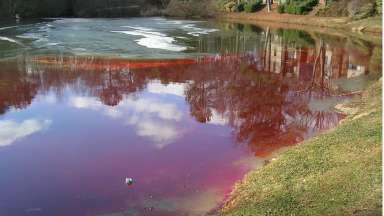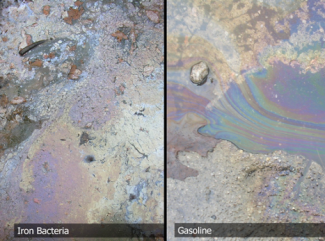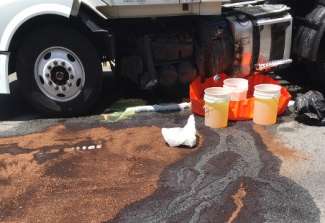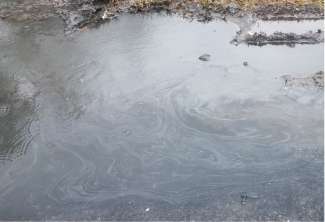Jump To:
Oil typically bonds to itself and does not mix easily with water. In some instances, a bacteria sheen will look like oil. To test and tell the difference, break the sheen by disturbing the material: Bacteria (to the left) will typically break into little platelets while oil (to the right) will reform to itself.
Petroleum Hydrocarbons
These chemical compounds are commonly the result of accidental releases of oil or fuel from vehicles and machinery. Thousands of small fuel spills can accumulate to very high concentrations as they are collected and transported by stormwater to a receiving water.
Polycyclic Aromatic Hydrocarbons
Polycyclic Aromatic Hydrocarbons, or PAHs, are found in coal-tar, a common ingredient in pavement sealant. They can be found in industrial processes like power generation, vehicle emissions, and various manufacturing activities.
PAHs are toxic and have been associated with a range of adverse effects, including causing cancer or mutation of genetic material. They are also known to accumulate in aquatic life, leading to potential impacts on aquatic ecosystems.



